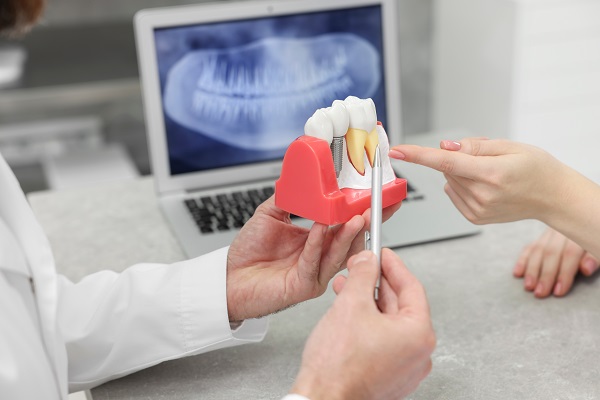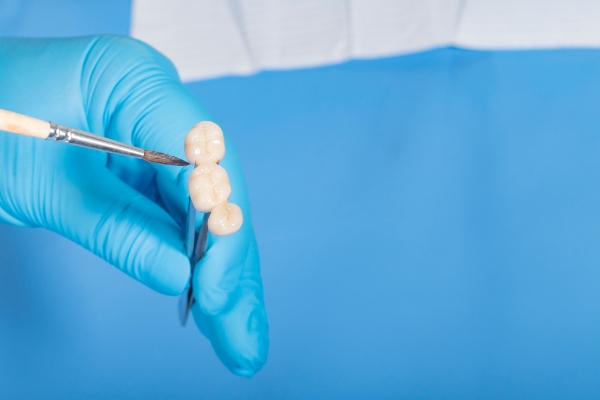Periodontics and Dental Implants: How They Work Together

Periodontics and dental implants are two areas of dentistry that often go hand in hand. Both of these treatments are important for helping to preserve the health and beauty of your smile. While periodontics is focused on treating diseases of the gums and bone, dental implants are focused on replacing lost teeth with artificial ones. Together, they can help to restore your smile and improve your oral health.
What are periodontics?
Periodontics is a branch of dentistry that prevents, diagnoses, and treats gum disease. The gums, bone, and connective tissues that support your teeth are collectively known as the periodontium, and periodontists are experts in managing the health of this important part of your mouth.
Periodontal disease results from plaque and bacteria buildup on the teeth and gums, resulting in inflammation, swelling, and infection. Periodontal disease can lead to tooth loss, serious health problems, and much more if left untreated.
Periodontists use a variety of treatments to manage periodontal disease, including scaling and root planing (deep cleaning), antibiotics, and surgical procedures. They may also work with other dental specialists, such as orthodontists and prosthodontists, to provide comprehensive patient care.
You should seek treatment for periodontal disease if you experience symptoms such as bleeding gums, bad breath, or loose teeth from a qualified periodontist as soon as possible. Early intervention can help prevent further damage to your gums and teeth and may even reverse the effects of the disease.
What are dental implants?
Dental implants are prosthetic teeth placed directly into the jawbone to replace missing teeth. They are made up of three parts: the implant, which is a small metal post that acts as a root for the tooth; the abutment, which connects the implant to the crown; and the crown, which is the visible part of the prosthetic tooth that looks and functions like a natural tooth.
Dental implants are a great alternative to traditional bridges or dentures because they offer a permanent, natural-looking solution for missing teeth. They are also extremely durable and can last many years with proper care.
Overall, dental implants offer a reliable, long-lasting solution for missing teeth that can greatly improve the function and appearance of your smile.
How do periodontics and dental implants work together?
This combination works hand in hand to restore oral health and enhance your smile. When you have gum disease, your periodontist can work with your dentist to provide a comprehensive treatment plan that includes dental implants.
First, your periodontist will treat your gum disease, which can cause bone loss and affect the stability of your teeth. They may recommend a deep cleaning, scaling, root planning, or gum surgery to remove infected tissue and promote healthy gum growth.
Once you have controlled your gum disease, your dentist will begin the process of placing dental implants. Surgically placed in your jawbone, dental implants are artificial tooth roots made of titanium. One of the things they can do is act as a solid and reliable foundation for teeth replacement devices like crowns, bridges, and dentures.
During the dental implant procedure, your dentist will create a small hole in your jawbone and place the implant into the bone. Over time, the implant fuses with the bone, which creates a strong bond that mimics the natural structure of your teeth.
After your bone has fused with the implant, your dentist will attach a small post called an abutment to the implant. This serves as a connector between the implant and your replacement tooth.
Finally, your dentist will create a custom replacement tooth, such as a crown or bridge, that matches the color and shape of your natural teeth. They will attach the replacement tooth to the abutment to complete the implant process.
Overall, the combination can help restore your oral health, improve your bite and speech, and enhance the appearance of your smile. By working with your periodontist and dentist, you can create a personalized treatment plan that meets your unique needs and goals.
What are the benefits of this combination treatment?
When restoring missing teeth, periodontics and dental implants are a winning combination. This combination treatment offers numerous benefits for patients, including:
- Improved oral health: By addressing gum disease before implant surgery, patients are less likely to experience complications such as infection or implant failure.
- Natural-looking and functional results: Dental implants are designed to look and feel like natural teeth. When combined with periodontal treatment, patients can expect a seamless result that blends in with the rest of their smile.
- Increased self-confidence: Missing teeth can make people feel self-conscious or embarrassed. With dental implants and periodontal treatment, patients can enjoy a full, healthy-looking smile and feel more confident in their appearance.
- Long-term durability: Dental implants are a durable, long-lasting solution for missing teeth.
Learn more about periodontics and implants
Overall, the combination can be a highly effective treatment for restoring missing teeth and improving oral health. Speak to your dentist or periodontist to learn more about this treatment option.
Request an appointment here: https://www.grandvalleydentistry.com or call Grand Valley Dentistry at (616) 259-6046 for an appointment in our Allendale Charter Twp office.
Check out what others are saying about our dental services on Yelp: Periodontics in Allendale Charter Twp, MI.
Recent Posts
Dental patients who are planning a visit to an implant dentist may be unfamiliar with the details regarding implants. It is crucial to learn as much information as possible before scheduling an appointment for this surgical procedure.A dental implant is a common permanent tooth replacement option that can be highly beneficial to a patient’s health…
Dental implant surgery is one of the most reliable and long-lasting ways to replace missing teeth. However, since this surgery involves inserting an artificial tooth root into the jawbone, it almost always causes some amount of pain. Before undergoing this surgery, many dental patients are worried about the level of pain they may experience afterward…
Dental implants are an option for people who need to replace one or more missing teeth. The process involves several steps during which a metal post is surgically mounted into the jaw. The replacement tooth or crown is then secured to the implant, holding the new tooth firmly in place.Missing teeth can have an adverse…
Many patients who have missing teeth consider dental implants as an option to restore the look and function of their smile. When deciding whether to have the procedure, it is important to learn as much as possible about the treatment.There are a variety of things patients should know about dental implants when considering the procedure.Dental…


